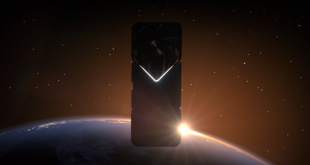The tests were performed in a controlled air conditioned room with temperatures maintained at a constant 24c – a comfortable environment for the majority of people reading this.
Idle temperatures were measured after sitting at the desktop for 30 minutes. Load measurements were acquired by playing Crysis Warhead for 30 minutes and measuring the peak temperature. We also have included Furmark results, recording maximum temperatures throughout a 30 minute stress test. All fan settings were left on automatic.
The cooler on this card improves upon the reference design, maintaining load temperatures around 57c during gaming. The large fan only has to spin at around 1,600rpm in Furmark to maintain these temperatures which would verify the low noise levels on the last page.
 KitGuru KitGuru.net – Tech News | Hardware News | Hardware Reviews | IOS | Mobile | Gaming | Graphics Cards
KitGuru KitGuru.net – Tech News | Hardware News | Hardware Reviews | IOS | Mobile | Gaming | Graphics Cards





Good card, but I cant help but feel this range of cards from AMD is rather dull and lifeless. why remove alot of the shaders on the cards? makes no sense to go back a step. negates the gains from the manufacturing process and increasing the clock speeds
Very dull launch day, they need to drop the prices.
Sapphire always do good coolers, but id love to know who in AMD thought it was a good idea to lose 140 stream processors on the new card? the HD6770 had 800 !
Crossfire performance is really good. id like to see results from two of the OC’d models.
great cooler, but the card undeneath hasn’t hit the spot im afraid.
I can’t see anybody in the UK listing a Sapphire SKU with 1150Mhz Core clock…
see Scan/Dabs have a 1120 listed…
Hi Muppett, you aren’t the first person to ask me about this, and ive contacted Sapphire today and they told me that SCAN have the core clock speed listed at the older speeds. It should be 1150mhz. you will hopefully see this change on SCAN Shortly.
Thanks for letting us know.
See this for more information http://www.futurehardware.com/latest-tech-news/737.htm
This card works best underclocked if you have a clocked version, some of the overclocked 7770’s have an odd issue that causes your screen to flicker. Performance wise its a good mid/entry range card but a complete failure from the 6000 series. One thing does stand out about the 7000 series though, their using better cooling which would be a nice addage if only the prices would drop.
@Frank I would guess it has to do with the dye shrinkage from 40nm scale to 28nm, I would have settled for a thousand stream processors if it meant abandoning such a useless shrinkage. My guess they shrunk the dye in order to control heat and leverage power out put. Which is just piss poor marketing strategy if you ask me.